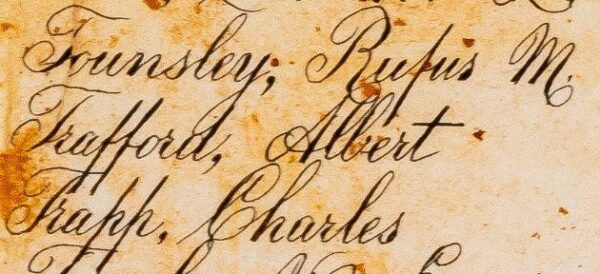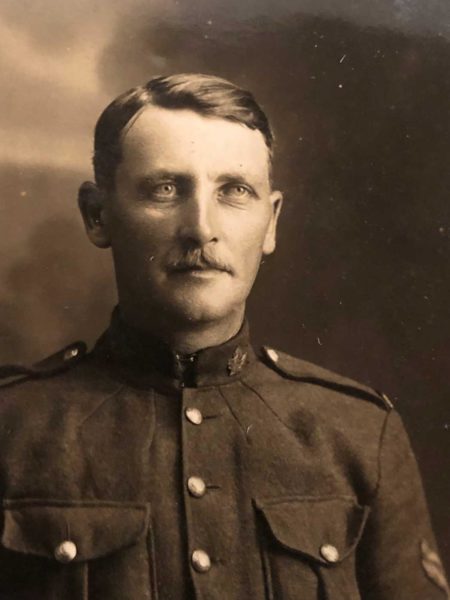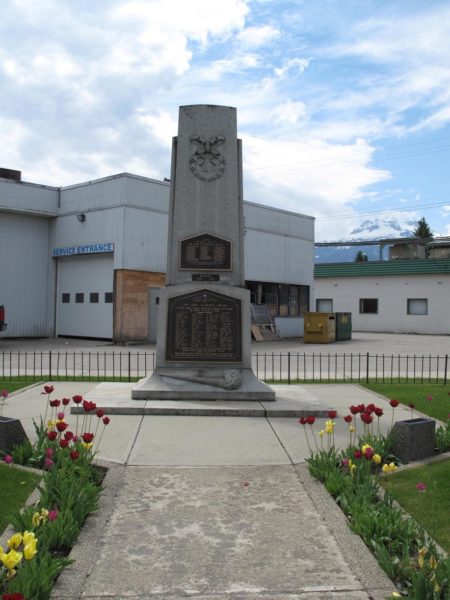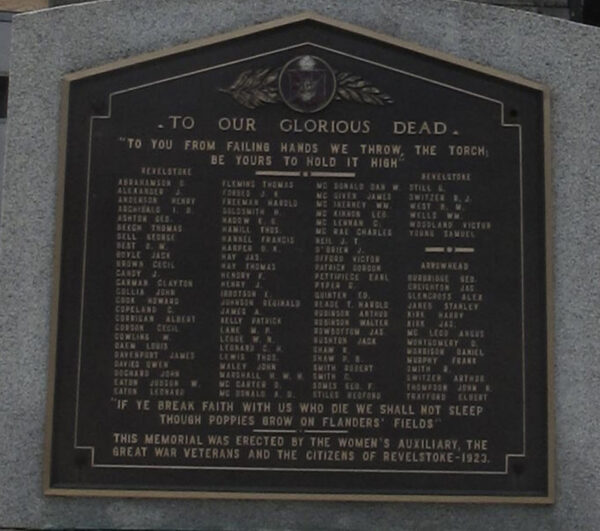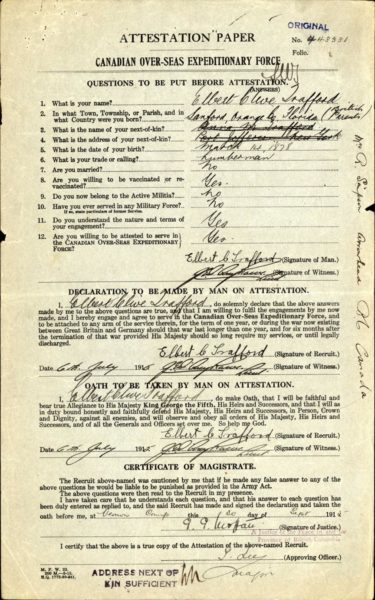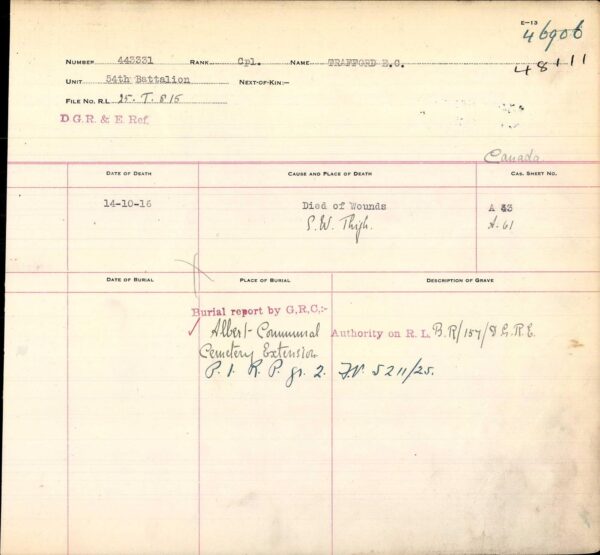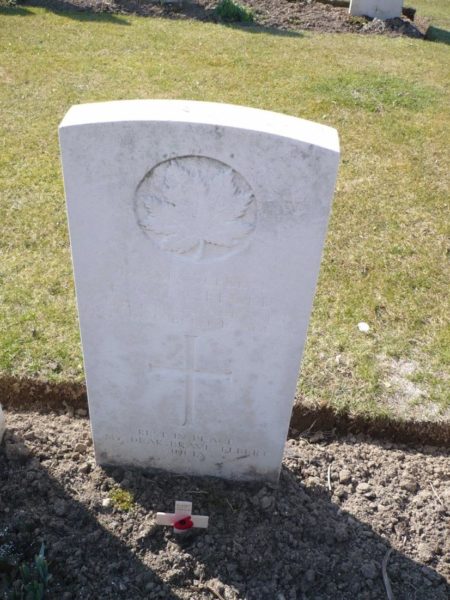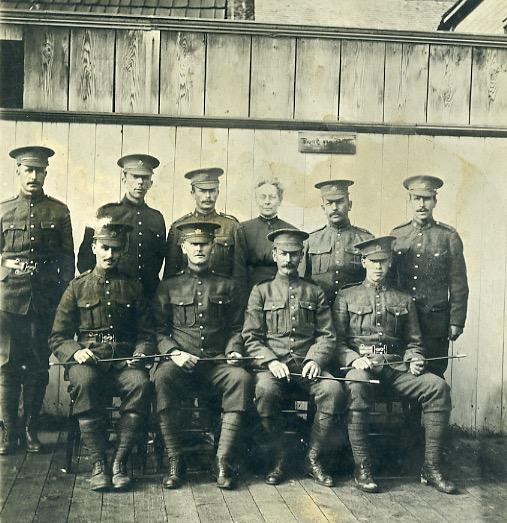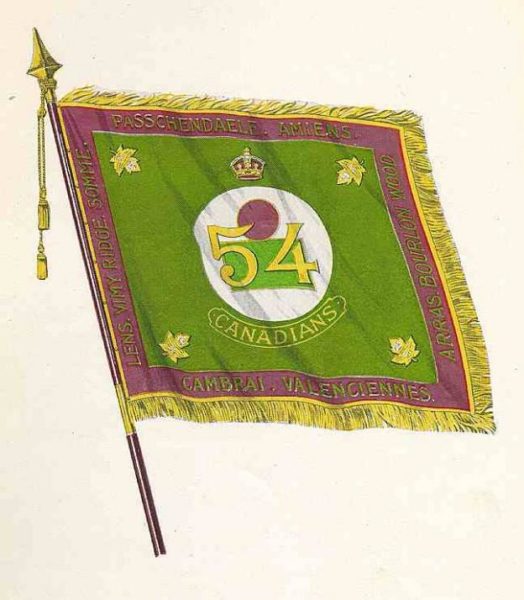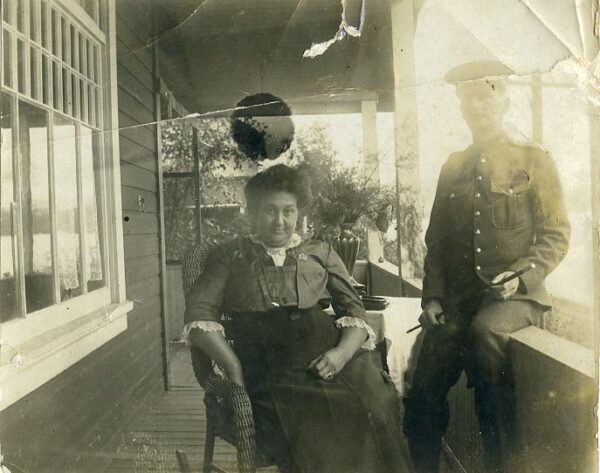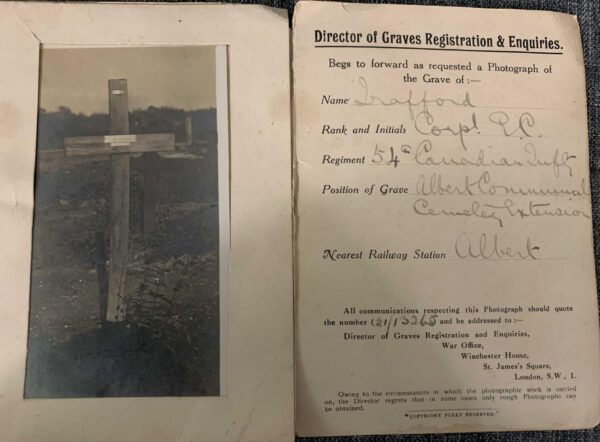Scroll 1 #657
Elbert Clive Trafford
CEF443331
Trafford was born in Sanford, Florida on March 14, 1878. He appears in the 1880 Census for Orange County, Florida, with his father, Edward Robert Trafford, a civil engineer, age 35, his mother Anna Mary, age 23, and his younger sister, Anna Maud, age 6 months.
A native of Greenwich, England, Edward Trafford was a Civil War veteran. In November 1861, he enlisted in the 13th Light Artillery Regiment in New York City, which was mustered out of service in March 1864. A few months later, in February 1865, Trafford, then an engraver living in Ogdensburg, New York, enlisted in the 7th US Infantry. He served for 3 years until his discharge as 1st Sergeant at Jacksonville, Florida, in February 1868. He and Anna M. Thompson were married in Orange County on May 10, 1875. It was the third marriage for Edward, first for Anna. By 1886, the Traffords had moved to Jacksonville, where Edward operated a hardware and cutlery store. Edward Trafford died in Port Jefferson, New York, on April 16, 1906. Afterwards, Anna drew a widow’s pension for her late husband’s military service, despite their divorce in 1890.
As a child Elbert Trafford spent some time in Yorkshire, England living with some of his mother’s relatives in the early 1880s. After leaving Florida, he worked as a saloon keeper in the mining town of Black Hawk, Colorado, in 1900. Two years later, he was working as a teamster for the Colorado Fuel & Iron Company north of Trinidad. Shortly afterwards, he moved to the Northern Rockies. In 1911, he was a lumberman at Hall’s Landing lumber camp near Kootenay, British Columbia, Canada.
When he volunteered for service in the 54th Kootenay Battalion, Canadian Expeditionary Force (CEF) at Vernon, British Columbia, on July 6, 1915, he listed his occupation as a lumberman. Volunteers for the CEF were questioned at the place of enlistment to complete a two-sided attestation form in triplicate, which included the recruit’s name and address, next-of-kin, date and place of birth, occupation, previous military service, and distinguishing physical characteristics. Recruits were asked to sign their attestation papers, indicating their willingness to serve overseas, and to swear an oath of allegiance to His Majesty King George V. According to his attestation papers, Trafford had two vaccination marks on his left arm and a bullet wound on his right arm. At 37 years old, he stood 5 feet 9 inches tall, and he had dark hair and gray eyes. And he was a Presbyterian. In the summer of 1915 the local newspaper reported that there was only one unmarried male of military age living in Arrowhead. Like Trafford, all the rest had joined up.
Recruited and trained in southern British Columbia, the 54th Kootenay Battalion embarked for Britain from Halifax, Nova Scotia, on November 22, 1915, onboard the HMT Saxonia, arriving in Plymouth, England on December 21. The 54th disembarked in France on August 14, 1916. It fought as part of the 11th Infantry Brigade, 4th Canadian Division in France and Flanders until the end of the war. Their first major operation was fighting on the Somme in the Ypres salient, going into the line in front of Courcelette, France on October 14. The conditions along the Somme were truly awful. Mud in the trenches was often up to the hips and it was no uncommon sight to find men stuck in the mud and having to be dug out; the weather was very bad. It was here that Corporal Elbert C. Trafford, regimental number 443331, died of his wounds, after having been shot through his thigh. He was buried near the small town of Albert, on the River Ancre in the Department of the Somme, some 17 miles northeast of Amiens.
The Revelstoke Review of November 16, 1916 carried this item on the death of Elbert Trafford:
Mr. & Mrs. Ralph Simpson of Arrowhead have just received word from military authorities at Ottawa concerning the death of Corporal Elbert C. Trafford, who died of wounds on October 14th, ‘somewhere in France.’ Before his death he wrote a farewell message on an envelope and handed it to the men who went to pick him up. The message read: ‘Goodbye all; my back feels shot off.’ – Elbert. This message was sent by his officer commanding, Major Lee, to Mrs. [Julia] Simpson. The deceased lived … with Mr. & Mrs. Simpson at Arrowhead, and who are sincerely mourning his loss.
The people of Revelstoke felt strongly that the men who had sacrificed their lives for their country must be remembered for all time. The Women’s Canadian Club arranged for a memorial plaque to be created and placed on the courthouse. This bronze plaque was unveiled on September 20, 1919. The Great War Veteran’s Association, formed in 1918, which became the Royal Canadian Legion in 1925, felt that the community should have a permanent cenotaph, rather than simply the plaque on the courthouse. The marble monument was dedicated in 1923. The name of Elbert Trafford is inscribed on the Courthouse and Cenotaph plaques under the Arrowhead listing.
Revelstoke Cenotaph, British Columbia, Canada.
Bronze plaque listing Elbert Trafford’s name (bottom right) along with 90 other men from the district who gave their lives during World War I.
Trafford’s death on October 14, 1916, marks the first fatality among Florida’s Fallen. And like Trafford, there were at least eleven other Floridians who served and died in the Canadian Expeditionary Force. Memorialized on the Scroll, are Andrew Jackson Robertson and Frederick Safay of the CEF. Knowles Giddings Oglesby of Bartow, Florida was killed in action while serving in an Irish regiment. And at least three other Floridians died while serving in the British Expeditionary Force.
 Attestation Papers for Elbert Clive Trafford.
Attestation Papers for Elbert Clive Trafford.
CEF Personnel File, Elbert Clive Trafford.
Elbert Clive Trafford’s grave in the Albert Communal Cemetery Extension, Department of the Somme, Picardie, France.
Trafford is seated 2nd from left.
Regimental flag of the “Cinquante-quatre.”
Distinctive shoulder patch of the 54th Bn.
Trafford with his “adopted” mother, Mrs. Julia Simpson, of Arrowhead, British Columbia. He lived with the Simpson family for more than a dozen years prior to enlistment.
Photo of Corp. Elbert C. Trafford’s grave, ca 1919.

